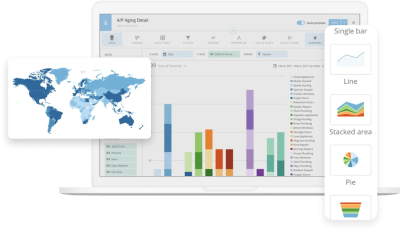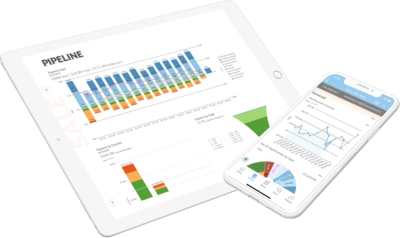Data warehousing tips, tricks, and strategies
The productive use of data is essential to the growth of a modern company. Businesses need to effectively leverage the massive amounts of data that they collect; otherwise, they won’t be able to compete in today’s markets.
Unfortunately, properly leveraging business data is more difficult than it first appears. Many businesses collect and store data in a completely decentralized, ad-hoc way. In fact, many businesses aren’t even sure of the scale of the data that they collect. To make use of their data, businesses need to deal with it in a consistent, centralized way.
Unless a business comes up with a consistent strategy for collecting and storing its data, it can’t use that data to drive decision-making and find insight. Businesses need to control and centralize their data in one location so that they can use it in a holistic way.
One of the most effective ways that businesses can centralize their data is through the cloud. Many services and tools exist that allow businesses to store massive amounts of data in the cloud.
With a cloud-based data storage tool, businesses store all of their data on third-party owned servers and access it when they need it using the Internet. This allows for more flexible access and saves money on self-hosting.

One cloud-based option that’s particularly appealing to many people is cloud-based data warehousing. With this strategy, a business stores all of its data in one centralized location on the cloud called a ‘data warehouse,’ and then accesses that data warehouse when they need it.
Cloud-based data warehouses are a popular solution for data management, especially among businesses that have many different pieces of business software that they have to manage. They allow for faster, more streamlined data access, and they allow for greater control over data.
Most importantly, they allow for centralized data control. Using a data warehouse, a data analyst can compare data from all their different software solutions easily without needing any additional access or data connections.
There are several features that businesses interested in cloud-based data warehouses should look for:
Ease of access
Nowadays, decision-makers need constant access to their data. They can’t wait for other people to access it for them or try to mess around with a data connector. With a data warehouse, access should be simple. That way, the people who need data can get at it. Often, this means simple, low-code data connectors that can be configured by any user.
However, it’s important that access isn’t too easy. Businesses still need to establish ownership over their data, and they need to be able to implement data governance strategies. Data warehouses also need to make data control simple.
Performance and scalability
With today’s data collection tools, businesses can collect thousands of different data points in a second. Even smaller and mid-sized businesses can easily collect data sets that are millions of rows long. These data sets get larger by the day.
Businesses need data warehousing solutions that can scale with them. Not only do data warehouses need to be able to store millions of different data points, they also need to be able to transmit big data in real time.
Cost
Data warehousing solutions exist at all sorts of different price points. Some solutions are meant for pre-revenue and low-margin businesses, while other solutions are enterprise-scale and charge enterprise-scale budgets.
Businesses that want to implement a data warehousing solution need to make sure that the data warehousing solution that they implement is within their budget. A small business doesn’t necessarily need to pay for a robust big data solution.
However, businesses also need to make sure that they don’t underpay for tools. Implementing a tool that’s limited in scope and can’t handle your data needs is often more costly than just purchasing the right tool in the first place.
In general, cloud-based storage solutions are cheaper than on-premise solutions of a similar scale. This is because businesses don’t need to buy their own servers—with cloud-based solutions, they ‘rent’ third-party storage space.

Data integration — the key to data warehouse success
Businesses that choose to implement a data warehouse solution often do so because their software stack is so complicated that there’s no way that they can handle all their data without external help. With software stacks this complicated, businesses often run into issues when they connect their data.
To connect their business software to their data warehouse, businesses need to use data integrations. A data integration is a code solution that allows two pieces of software to transfer data. Data integrations are essential to the success of any data warehouse implementation.
There are three main types of data integration:
Native integration
Business tools that use the same underlying data infrastructure can often communicate their data in a simple, easy-to-implement way. These integrations most often exist between tools owned by the same vendor, who can build in data connectors between tools they own.
Pre-built integrations
Many tools, especially tools that rely on integrations like business intelligence systems, have pre-built data integrations with other popular tools. These integrations are built by the owner of one tool to allow users to integrate with another tool. Generally, these integrations are more common and easier to implement than other solutions.
Third-party integrations
In situations where no integrations already exist between two tools, businesses need to build their own connections between them. These integrations are called ‘custom’ or ‘third-party’ integrations. They’re best thought of as a last resort when no other solutions present themselves.
How to ensure data warehouse success
Things like data integration are just the tip of the iceberg when it comes to data warehouses. To make sure that your data warehouse implementation goes well, try these strategies:
Use your BI tool as a data warehouse
Data warehouses need to do two things—- connect to all of the other tools on a business’s software stack and store their business data in a centralized location. Many businesses already have a tool that can do both.
A BI tool can easily serve as a data warehouse, especially for small and mid-size businesses that don’t want to dedicate the resources to a standalone data warehousing solution.
In addition, BI tools offer data analysis, dashboarding, and visualization tools that allow businesses to make the most of their data. In a data warehouse setup, using a BI tool cuts out the middleman since businesses will need to transfer their data to their BI tool eventually anyway.

Look for self-service tools
Businesses get the most out of their data warehouses when everyone can effectively use them to manage and store their data.
Companies that invest in standalone data warehousing solutions often struggle to make good use of their tools because only IT and other technical experts can effectively use them. The best data warehouse solutions are ones that everyone can use.
Look for data warehouse tools that advertise as ‘self-service.’ That means they’re designed for people without much data experience, and they should be usable without IT or other technical experts.
Use a consistent data integration strategy
One common issue that businesses run into as they manage their data warehouse day-to-day is data not updating effectively. Data needs to be updated constantly, so that the people using that data know they’re getting the most up-to-date information possible.
When data problems happen, the most likely cause is the initial data integration. Depending on the method used, data integration can cause errors when data is transferred between two tools.
The best way to prevent these sorts of issues in the first place is to integrate your software in a consistent way by using the best integrations possible. This way, when there are issues, a business can know exactly what’s going wrong and how to fix it.
This is one reason that pre-built connectors are generally the best option. When a pre-built connection messes up, it’s not your job to fix it-— you can just wait for a solution from your vendor.
Data warehouses — the next step in data storage
As more and more commerce moves online, businesses’ data collection and storage needs are going to get larger and larger. Basic, on-premise data storage solutions aren’t going to cut it for anything but the smallest businesses.
Cloud-based data warehouses are currently the best solution for businesses’ data storage problems. They’re a centralized way to store all of a business’s data so that it can be accessed from anywhere.
With a BI tool as a data warehouse, you can take that data and put it straight to work in dashboards and visualizations. Data warehouses are an essential part of any modern business’s data strategy.
Check out some related resources:

8 Best AI Tools for Data Visualization

10 Looker Alternatives and Competitors in 2025






